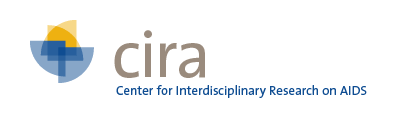
Principle Investigator(s):
Funder: National Cancer Institute
Project period: 12/01/2012 - 11/30/2015
Grant Type: Research
Further Detail
Abstract Text:
Human papillomavirus (HPV), the most common sexually transmitted infection in the US, is an established necessary cause of cervical cancer. It is well documented that black, Hispanic and low-income women have persistently higher rates of cervical cancer incidence and mortality compared to white and higher income women. The recent licensure of two highly efficacious vaccines against HPV signals an important opportunity to reduce these disparities. These vaccines are currently recommended for adolescents ages 11-12 years, with catch-up vaccination to age 26 years for females and 21 years for males, in a 3-dose regimen over a 6 month period. Reducing disparities in cervical cancer depends on adequate vaccine uptake by those at greatest risk. Currently, many adolescents fail to receive all 3 doses. Even more troubling are strong and persistent disparities in completion: among females who receive at least 1 dose, black, Hispanic, and low-income individuals are significantly less likely to receive all 3 doses. Therefore, evidence-based and culturally relevant interventions are urgently needed to increase adherence to the recommended regimen. However, we currently have an insufficient understanding of the barriers to completion for these vulnerable populations. Therefore, we propose an exploratory and developmental study that will utilize a sequential mixed methods approach to identify and quantify barriers to HPV vaccination. The specific aims of this study are to: (1) identify and describe barriers to HPV vaccination completion among lower-income racial and ethnic minorities; (2) estimate the prevalence and strength of barriers and examine associations with race, ethnic identity, and socioeconomic status; (3) generate ideas for future interventions that will be culturally relevant and have the greatest potential for impact. Using Ecological Systems Theory as a framework, we will determine barriers at the individual, organizational, and community levels. We will conduct this study at an urban primary care center that serves a predominantly racial/ethnic minority and low-income population. Qualitative in-depth interviews with parents of adolescents will be conducted to identify possible barriers, adapt the conceptual model, and inform development of a structured survey. In the quantitative phase, this survey will be administered to a sample of 200 parents of adolescents and statistical analyses will estimate the prevalence and strength of barriers and examine correlates including race, ethnic identity, and socioeconomic status. The final phase will involve interpretive qualitative interviews to validate and triangulate quantitative findings. These conclusions will be used to develop interventions that have the greatest potential for impact by determining the most salient barriers to completion and strategies for overcoming these barriers. This proposed work is essential for providing the knowledge necessary to translate empirical findings about high HPV vaccine efficacy into improved women’s health through evidence-based interventions to increase vaccination coverage for populations at greatest risk for the consequences of HPV infection.

